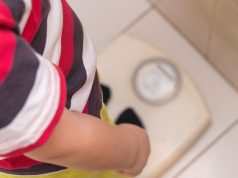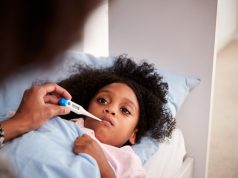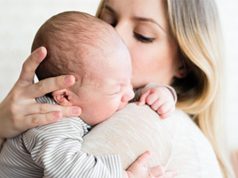The American Academy of Pediatrics National Conference & Exhibition
The annual meeting of the American Academy of Pediatrics (AAP) was held from Oct. 24 to 27 in Washington, D.C., and attracted approximately 12,000 participants from around the world, including primary care pediatricians, pediatric medical subspecialists, pediatric surgical specialists, and other health care professionals. The conference featured scientific sessions that focused on the latest advances in the care of infants, children, adolescents, and young adults, as well as scientific papers, posters, and education exhibits.
In one study, Edward J. Hass, Ph.D., of the Nemours Foundation’s Center for Children’s Health Media in Wilmington, Del., and colleagues found that 40 percent of coaches sampled and 50 percent of parents sampled would be comfortable taking an action less strict than return-to-play protocols require after a child’s sport head hit.
“This means pairing such a coach with such a parent would leave 20 percent of child athletes without an advocate on the field of play. Certain key symptoms that require immediate medical attention after a head hit would not be treated as such by a substantial proportion of parents,” Hass said. “The study findings suggest strongly that knowledge gaps are due less to the inability to recognize symptoms per se than to not realizing the implications of a possible concussion and why it needs to be dealt with immediately.”
Hass believes that continued and required education on what a concussion is, its seriousness, and the need to follow return-to-play protocols is important, as it will help fill in the knowledge gaps and provide child athletes with safety advocacy on the field of play.
In another study, Edith P. Allen, M.D., of Phoenix Children’s Hospital, and colleagues found that more than 25 percent of pregnant woman who were using marijuana were also consuming other drugs (cocaine, methamphetamines, and/or opioids).
“Women, despite the risk to their fetus, continue to consume drugs during pregnancy,” Allen said. “With the legalization of tetrahydrocanabis use (medical or recreational), we may see an increase in its use by pregnant woman. Most importantly, will legalization of marijuana be a gateway to consumption of other drugs? Are we going to see an increase in consumption of illicit drugs during pregnancy? Until more information is known, should pregnant women and their newborns continue to be screened for other drugs?”
Jackie F. Crews, M.D., of All Children’s Hospital Johns Hopkins Medicine in St. Petersburg, Fla., and colleagues found that a short and inexpensive cardiopulmonary resuscitation (CPR) course in high schools can teach thousands of students hands-only CPR and increase their likelihood of performing CPR should they witness a cardiac arrest.
“Hands-only CPR bypasses the requirement of mouth-to-mouth resuscitation. Students participated in a 45-minute session with hands-on learning after watching a tutorial video. Answers to questions posed before and after the session demonstrated increases in their knowledge and confidence in initiating CPR for a victim of cardiac arrest,” Crews said. “This could impact survivability for cardiac arrest victims around the country by increasing the number of bystanders available and willing to initiate CPR in a witnessed cardiac arrest. Our goal is to mandate this training as a high school graduation requirement in all 50 states; currently 27 states have this stipulation.”
Michael B. Pitt, M.D., of the University of Minnesota Masonic Children’s Hospital in Minneapolis, and colleagues evaluated images in parenting magazines to determine whether they reflect AAP recommendations. The investigators reviewed the AAP published recommendations both via policy statements and their parenting website.
“We then reviewed advertisements in 2009 and 2014 for the top two parenting magazines. We reviewed 3,218 advertisements over two separate years, excluding advertisements for adult products and only including those advertised for use or consumption by children,” Pitt said.
The investigators found that nearly one in six advertisements (15.7 percent) contained a violation of at least one AAP recommendation, including unsafe sleep positions, lack of helmet use, and toddlers on a boat without life jackets.
“This could potentially reinforce risky behaviors,” Pitt said. “We weren’t trying to endorse the AAP recommendations but use them as a standard. Over one half of the violations, 58.6 percent, were considered violations of major health and safety recommendations, including choking hazards, cold medicine use, and backyard trampoline safeguards and fall risks.”
Natalia Isaza, M.D., of the Children’s National Health System in Washington, D.C., and colleagues examined mothers’ stress levels before and after they held their babies skin-to-skin for at least one hour. The investigators had mothers of infants in a neonatal intensive care unit (NICU) take an objective survey before and after one hour of skin-to-skin contact with their newborn. The survey consisted of 14 questions evaluating stress levels in three subsets.
“We found that mothers reported a decrease in their stress levels after skin-to-skin contact, especially related to stress from being separated from their infants, feeling helpless and unable to protect their baby from pain and painful procedures, and the general experience in the NICU,” Isaza said. “We already know there are physiological benefits in the newborns when they are held skin-to-skin, such as stabilization of heart rate, gains in sleep time and weight, and greater breastfeeding success. This study provides more evidence that skin-to-skin contact can also decrease parental stress that can interfere with bonding, health and emotional wellness, and the interpersonal relations of parents, as well as breastfeeding.”
AAP: Tackling Should Not Be Banned From Youth Football
MONDAY, Oct. 26, 2015 (HealthDay News) — There is no need to ban tackling from youth football, but players need the right training and supervision to cut their odds of injury, according to a new policy statement from the American Academy of Pediatrics (AAP) presented at the academy’s annual meeting, held from Oct. 24 to 27 in Washington, D.C., and published online Oct. 25 in Pediatrics.
AAP: Paintball, BB Guns Can Severely Injure Children
FRIDAY, Oct. 23, 2015 (HealthDay News) — Paintball, airsoft, and BB guns are often considered harmless, but a new study confirms that the guns can cause severe, sometimes life-threatening injuries in children. The research is scheduled for presentation at the annual meeting of the American Academy of Pediatrics, held from Oct. 24 to 27 in Washington, D.C.
AAP: Dogs Help Curb Anxiety in Children With Cancer
FRIDAY, Oct. 23, 2015 (HealthDay News) — Therapy dogs appear to provide children being treated for cancer with both physical and mental benefits, according to research scheduled to be presented at the annual meeting of the American Academy of Pediatrics, held from Oct. 24 to 27 in Washington, D.C.
Copyright © 2015 HealthDay. All rights reserved.







